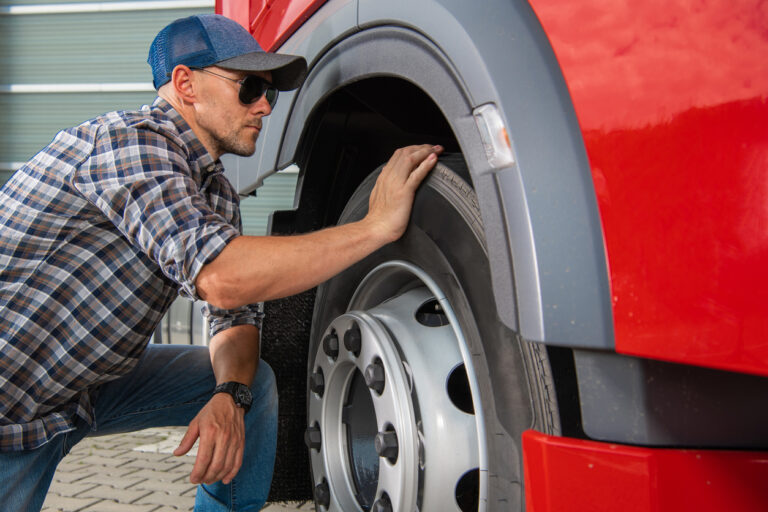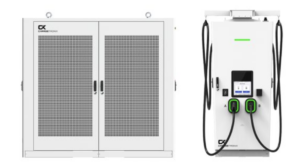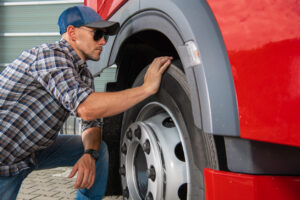AVON, Ohio – Fall has officially arrived in North America, which means temperature swings, cooler weather, and wintry conditions aren’t far behind. Now is the ideal time for fleets and truck drivers to prepare vehicles for what’s to come: This edition of the Bendix Tech Tips Series aims to help trucking professionals keep things rolling safely in the winter months.
Guarding the Air Supply
Commercial vehicle compressed air systems are connected to more vehicle technologies than ever, from brakes to automated manual transmissions (AMTs) to emissions controls and advanced safety functions like stability control and collision mitigation. All of these technologies depend on a reliable supply of clean, dry air to operate safely and effectively – which can be tricky to manage as a vehicle experiences temperature changes and freeze-and-thaw cycles because of water accumulating in the air tanks.
“Once the weather starts getting cold, we recommend manually draining the air tanks to purge any moisture left over from the warmer, wetter months,” says Brian Screeton, manager – technical training and service at Bendix. “It’s a good practice to drain them every three months for a typical line haul truck, and vehicles like vocational trucks that use a lot of air might even require monthly or weekly draining.”
Bendix also recommends replacing both the air dryer cartridge and the purge valve, especially if neither has been recently replaced or if you see moisture when the tanks are drained. Another sign that it’s time for a new cartridge is excessive air consumption. Service personnel should always follow manufacturer recommendations when changing the air dryer cartridge to ensure optimal performance. Failure to do so could result in property damage and/or injury.
“Moisture in the system can condense and freeze in winter, heightening the risk of valve and brake malfunctions,” Screeton says. “The dryer is a crucial part of defending the system against moisture year-round, but particularly in cold weather. Additionally, since most truck manufacturers equip their vehicles with oil-coalescing cartridges like Bendix® PuraGuard®, you’ll want to make sure you replace these like-for-like: Oil aerosols passing through standard cartridges can shorten component life and lead to system troubles. You can always upgrade a standard cartridge to an oil-coalescing, but not the other way around.”
Since corrosion and grit accumulation are accelerated in winter due to snow, ice, and road treatments, it’s good to start the season with a new purge valve, too. Bendix maintenance kits include both the cartridge and purge valve for this reason, and some come with a cartridge pressure protection valve as an additional seasonal replacement.
As winter approaches, Bendix also offers an important reminder about using de-icing solutions to clear a frozen air system: While the practice is sometimes necessary to get a truck back on the road quickly and safely, it also means keeping a close eye on the affected area afterward, and the air system as a whole.
“De-icing chemicals can damage air system components like valves and O-rings, so drivers should try to limit the amount of the de-icing chemicals used to the affected area as much as possible,” Screeton advises. “And later on in the garage, make sure those parts are inspected closely for any signs of corrosion or weakness and the air brake system continues to work properly.”
An Eye on Brakes
Regular inspections and proper lubrication are the keys to effective preventive maintenance for brakes and wheel-end components as winter nears: Get them ready now, before facing the tests of snow, ice, and sleet.
“Winter walk-arounds certainly aren’t fun when the weather is nasty, but you’d much rather spot a potential problem before you get on the road,” says Keith McComsey, director – air disc brake and systems product group at Bendix. “Drivers will want to look carefully for damaged or corroded air brake chamber housings – ice chunks or winter-broken pavement can knock things loose, and harsh road chemicals can give corrosion a damaging foothold.”
During garage maintenance, technicians should check the chambers to make sure dust plugs are seated properly to prevent internal damage caused by corrosive materials getting inside the chamber. If it’s necessary to replace a chamber, some applications may benefit from the extra protection provided by a sealed chamber. As an added layer of security against contamination, the Bendix® EnduraSure® Pro™ sealed air chamber incorporates a dust plug with an integrated check valve. Air can escape, but moisture and other contaminants are prevented from entering the chamber.
“If you’re checking a vehicle with air disc brakes, inspect the boots for damage like punctures or tears,” McComsey said. “Any opening into the caliper can lead to corrosion. Technicians should also check the integrity of the caliper slideability and replace any worn or damaged parts.”
Once the brake is assembled, make sure the shear adapter cover is in place and properly seated. Pads should move freely in the carrier; if they don’t, then remove them and clean the carrier surface with a wire brush. The brake should also move freely on its guidance system.
McComsey continued, “It’s also important to examine the brake rotor surface on all wheel-ends to confirm there are no stress cracks or, if cracks are present, they do not exceed the depth and length outlined by the rotor manufacturer.”
Finally, getting wheel-ends ready for winter means lubricating all the appropriate components to keep moisture from building up and enabling corrosion. Automatic slack adjusters, clevis pin connections, cam tubes, shafts, and bushings should all be newly greased in advance of the season.
Inspecting ADAS
Across North America, winter can bring a regular parade of rapidly changing and unpredictable road conditions: Wind, snow, ice, and freezing rain can make for a challenging mix, and driver-supportive technologies like stability control and collision mitigation can help make a difference when properly maintained.
Before hitting the road, drivers should check for any active diagnostic trouble codes (DTCs) and make sure any external cameras or radars are clear of snow and ice. Obstructions to these sensors can affect the performance of forward- or side-mounted collision mitigation technologies and lane departure warning systems.
“Technicians should ensure any tire pressure monitoring systems are operating properly, especially in the winter months where larger temperature swings can occur,” says TJ Thomas, Bendix director of marketing and customer solutions. “And along with drivers, they should be watching tires for tread depth and unusual wear such as cracking, as well as making sure all wheel bolts are tightened.”
The electrical connections from advanced driver assistance systems (ADAS) to other vehicle components should also be examined in the garage to keep them secure and watertight as a guard against corrosion and moisture contamination.
“Winter can be tough on trucks and their drivers,” Screeton says. “With the right preventive maintenance and vigilance, fleets and the professionals behind the wheel can help keep vehicles on the road and in good operating condition so everyone makes it safely to their destination.”
The Trucker News Staff produces engaging content for not only TheTrucker.com, but also The Trucker Newspaper, which has been serving the trucking industry for more than 30 years. With a focus on drivers, the Trucker News Staff aims to provide relevant, objective content pertaining to the trucking segment of the transportation industry. The Trucker News Staff is based in Little Rock, Arkansas.








